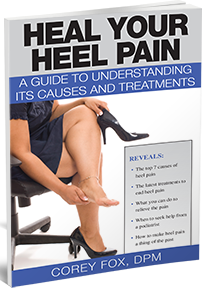Massapequa Podiatry Associates loves runners. We love seeing so many dedicated people come into our practice and we’re always happy to help athletes keep their bodies in tip top shape.
Of course, your body sees a lot of wear and tear in running. (This isn’t news to us!) We applaud any individual who seriously takes care of their body, but we also know that overuse injuries are likely going to happen at some point when running. That’s just par for the course.
We often see overuse injuries, especially with those training for long distance runs in particular. Any run has the potential for misfortune to negatively impact the body (ankle sprains and sore feet could happen at any time).
However, the risk of damage to your body increases exponentially with longer runs, especially marathons and half-marathon. There’s only so much your body can endure before you start to experience soft tissue injuries and heel pain.
The good news is that the right type of game plan for training will severely mitigate these risks. No training regimen is perfect, but following these tips will prepare you for any run you decide to train for. And with the Long Island Marathon not too far away, here are our recommendations to keep you on your feet and help you cross that finish line!
If you have committed yourself to running down Charles Lindbergh Boulevard the weekend of May 4th and 5th, we’ve got some advice for you!

Prevent Running Injuries
Don’t do too much too fast
Most running injuries can be prevented by doing an appropriate level of activity. We’re so glad that you want to better yourself, but please don’t go straight from the couch to running 5Ks. That’s a recipe for plantar fasciitis if we have ever known one.
More seasoned runners might think that this is only for those who are new to the discipline. And there’s some truth to that. You’re much more likely to injure yourself when going from a state of inactivity to rapid activity.
However, don’t be fooled into thinking that overdoing it only applies to those beginning to run. A lot of solid runners might train for a half-marathon before deciding to tackle a full marathon, only to discover that their heels are now on fire after every long run. Going from a half-marathon to a marathon is still DOUBLING the amount of distance you run, and you need to build your performance up to meet that demand in a gradual manner.
As a general rule of thumb, we’d recommend no more than 10% increases per week. What does that mean? Whether it’s time, distance per run, or miles you run in a week, don’t increase by more than 10%. Of course, this will vary depending on your medical history, weight, and athleticism, but it’s a nice benchmark.
Alter your tempo
“If you’re running for a specific race, you should only train at that distance, right?”
Well, not quite. Yes, you’ll want to run a 10K if you are training for a 10K. However, don’t think that there isn’t a benefit in a shorter run. A faster, shorter run per week is often a good way to mix up the training and challenge your body in a different way.
Of course, still run a longer distance at least once a week. If you’re aiming to run a marathon, you’ll want to progressively add mileage still, but don’t be afraid to drop the distance and up the speed. (You’ll get done quicker, too!)
Don’t be afraid to cross-train
Yes, you’ll still want to log those long miles. We’re not saying, “Don’t run.” However, taking a day to do some yoga to stretch out or going for a swim to mix up your cardio is perfectly fine, too. We’d actually encourage it!
Taking some time to train without running, whether it’s lifting, swimming, shadow-boxing, or yoga, will actually let your body rest and decrease your odds of developing an overuse injury such as plantar fasciitis or Achilles tendonitis. Cross-training will only help, if done correctly.

Treating Running Injuries
You might have the best training plan in the world, the best pair of shoes, and a lot of experience running, but that doesn’t mean that your feet won’t suffer. Even the best plans might go south. Plantar fasciitis, Achilles tendonitis, and ankle sprains are always possible.
If running pain stops your training, don’t hesitate to reach out to Dr. Corey Fox, Dr. Justin LoBello and the staff here at Massapequa Podiatry Associates. We have many innovative treatments to offer, whether it’s custom orthotics, Tenex, or our K Laser therapy for your pain. We have years of experience in keeping Nassau County healthy and active.


